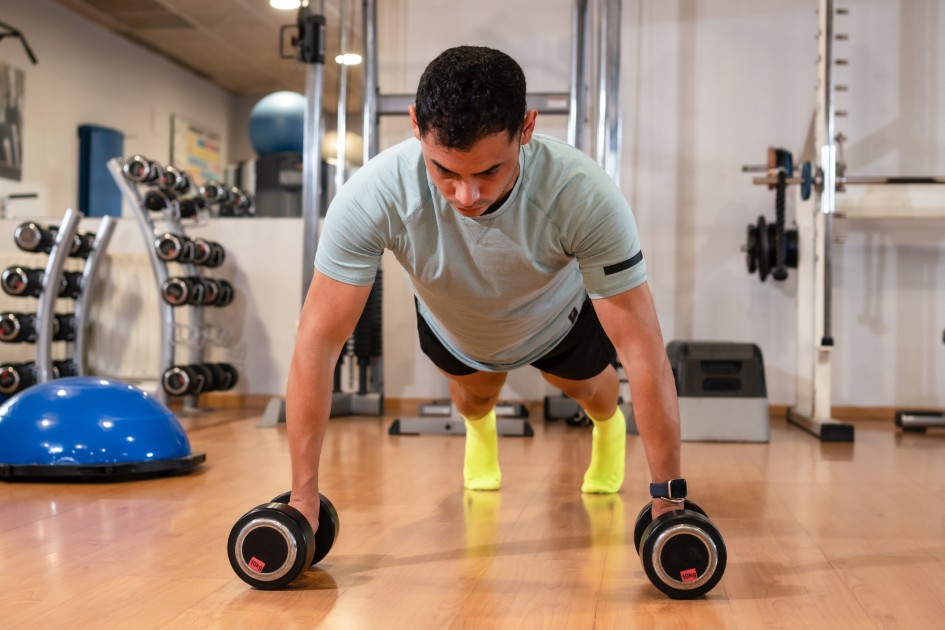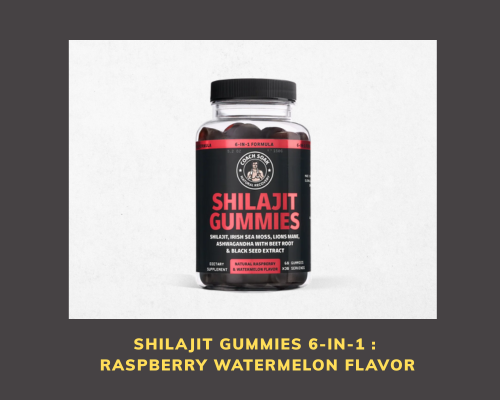Are you struggling to find time to work out? You’re not alone. The number one excuse people give for skipping exercise is a perceived lack of time healthline.com. The good news is that you don’t need hours in the gym to see results. Short, focused workouts can deliver impressive benefits for fat loss and strength gains, whether you exercise at home or in the gym. This article will explore short duration exercise options—high-intensity circuits, mini workouts, and quick strength sessions—that help you burn fat and build muscle on a busy schedule. Get ready to discover how even 10-20 minutes a day can bring you closer to your fitness goals!
Why Short Workouts Work (Backed by Science)
Time-efficient workouts really work. Research shows that several mini-workouts spread through the day can be just as effective as one longer session of the same total duration. In one review of 19 studies, adults who accumulated short bouts of exercise (≥10 minutes each) enjoyed similar improvements in blood pressure, cardiovascular fitness, and metabolic health as those exercising in one continuous block. In practical terms, this means you can break your 30-minute workout into three 10-minute sessions and still gain comparable health benefits.
Short workouts also address the “no time” dilemma. As exercise physiologist Dr. Glenn Gaesser notes, short sessions can appeal to people who feel they can’t fit in a long workout. It’s easier to squeeze in a quick 10-minute routine than to dedicate a full hour. This flexibility helps you stay consistent – an older study even found that multiple 10-minute bouts were at least as effective for exercise adherence and weight loss as a single 30-minute workout. In other words, short workouts not only work, but they may also be easier to stick with long-term.
Higher intensity in less time. Another reason short workouts deliver results is that they allow you to exercise at a higher intensity. When you know you’re only working out for 10 or 20 minutes, you can really push yourself. In fact, performing brief high-intensity intervals can burn more calories than exercising continuously at a moderate pace. Research indicates that high-intensity interval training (HIIT) often yields equal or greater improvements in fitness, body composition, and metabolic health compared to longer steady-state training – all with a smaller time commitment frontiersin.org. It’s no surprise that public health guidelines equate 75 minutes of vigorous exercise to 150 minutes of moderate exercise for the week, goodrx.com. By upping the intensity, short workouts make every minute count.
Fat Loss in a Flash: Burn Fat with Short Workouts
If your goal is fat loss, short high-intensity workouts can be incredibly effective. Studies suggest that HIIT-style routines (think quick bursts of effort with brief rest) can help you burn more calories and body fat in less time. For example, in one experiment, a 10-minute workout that included just 1 minute of all-out exercise produced similar aerobic and metabolic benefits as a much longer moderate-intensity workout. These intense bouts stimulate your metabolism and can lead to calorie burn even after the workout ends (thanks to the “afterburn effect” of vigorous exercise).
Metabolic boosts and weight management: Short workouts won’t magically shed pounds overnight – you still need a calorie deficit – but they can jump-start your metabolism and support your weight loss efforts. Brief cardio sessions (like a fast 10-minute run or a Tabata circuit) can burn roughly 50–150 calories, goodrx.com. More importantly, high-intensity intervals may trigger fat-burning hormones and improve insulin sensitivity healthline.com, helping your body utilize fat for fuel. Some research even suggests that high-intensity intermittent exercise leads to greater fat loss than traditional steady exercise. The takeaway? Don’t underestimate short workouts for fat loss – intensity and consistency are key. Aim to accumulate the recommended weekly aerobic activity (about 150 minutes moderate or 75 minutes vigorous) in whatever chunks you can, healthline.com, and include some vigorous mini sessions to amplify fat-burning.
Example Quick Fat-Loss Workouts
- 10-Minute HIIT Circuit (Home or Gym): Pick 4 bodyweight moves (e.g., jump squats, burpees, mountain climbers, high knees). Do each at maximum effort for 30 seconds, followed by 30 seconds rest. Repeat the circuit twice. This kind of HIIT circuit elevates your heart rate and can scorch calories in a short time. Pro Tip: Focus on big movements that engage multiple muscles to burn more energy.
- 15-Minute Cardio Blast: On a cardio machine (treadmill, bike, rower) or outdoors, warm up 2 minutes, then do 8 rounds of 20 seconds sprint + 40 seconds easy pace, and cool down 2-3 minutes. This Tabata-style interval workout is proven to improve cardiovascular fitness and can contribute to fat loss. Challenge yourself during the sprints – those intense bursts are where the fat-burning magic happens.
- Fasted Morning Bodyweight Routine (7 minutes): Right after waking, cycle through moves like jumping jacks, push-ups, lunges, and planks, 30 seconds each, minimal rest. A short morning workout can boost your energy and metabolism for the day. Remember: even 5–10 minutes of activity is better than none when it comes to weight management.
Build Strength in Minutes: Quick Workouts for Muscle and Power
You might wonder, can you get stronger with short workouts? Absolutely. Strength training doesn’t always require a long gym session. The key is to use resistance and work your muscles to fatigue. Research indicates that even doing a single set of an exercise to failure (8–12 reps) once or twice a week can increase muscle strength and endurance over time. In other words, a brief strength routine can be effective if you push yourself in that short window.
Circuit training for strength and fat loss: One particularly efficient strategy is resistance circuit training, where you perform a series of strength exercises back-to-back with little rest. According to a 2021 meta-analysis, circuit-based training significantly decreases body fat while increasing muscle mass in adults researchgate.net. Participants improved their strength and cardiovascular fitness concurrently with this approach. The best results came when people used moderate weights, kept rest periods short (about 10–30 seconds), and performed circuits regularly over several weeks. This means you can design a 20-minute circuit (e.g., squats, push-ups, rows, etc., done in succession) to build strength and burn fat at the same time – perfect for busy folks aiming for fat loss with muscle tone.
Heavy lifting, short duration: If you prefer traditional weightlifting, you can still make progress in short sessions by focusing on compound exercises (exercises that work multiple muscle groups, like squats, deadlifts, bench presses). For example, a 20-minute gym session might involve 3 sets of squats and 3 sets of pull-ups or bench presses. Because these moves recruit a lot of muscle mass, they stimulate strength gains efficiently. Keep the intensity high – use a challenging weight and minimal rest. Over time, gradually increase the weight or reps (progressive overload) to continue gaining strength goodrx.com. Short strength workouts, done 2–3 times per week, can absolutely help you get stronger and even build muscle, especially if you are consistent and push yourself in each brief session.
Example Quick Strength Workouts
- 15-Minute Full-Body Circuit (Home): Do 3 rounds of 5 exercises: e.g., 10 push-ups, 15 bodyweight squats, 10 bent-over backpack rows (fill a backpack with books), 10 lunges (each leg), 15-second plank. Rest 1 minute between rounds if needed. This hits all major muscle groups in a short time. Focus on form, and as you get fitter, try to reduce rest time to keep intensity up.
- 20-Minute Compound Lifts (Gym): Warm up quickly, then perform 3 sets of 8–10 squats and 3 sets of 8–10 bench presses (or substitute with deadlifts, rows, etc. as preferred). Rest ~1 minute between sets. By prioritizing big lifts, you stimulate multiple muscles. Though brief, this routine can boost strength and even support weight loss by increasing muscle (which raises metabolism), mayoclinic.org. Pro Tip: If equipment is free, turn it into a circuit – do a set of squats, then a set of bench with little rest – to save time.
- Micro Workouts through the Day: If you can’t block off 15–20 minutes, sprinkle mini strength moves into your day. For example, do 10 squats after each hour at your desk, or do a couple of 30-second wall-sits and push-up sets during TV commercials. These “exercise snacks” might seem small, but they add up and keep your muscles engaged. Over a day, 6 bouts of 5 minutes equals 30 minutes of strength work!
Home-Based Short Workout Options
One of the great advantages of short workouts is that you can do them anywhere, including right at home with little or no equipment. Home-based routines are perfect for busy parents, remote workers, or anyone without access to a gym. Here are some effective options for a quick home workout:
- Bodyweight HIIT: As mentioned, high-intensity interval training can easily be done at home. Exercises like burpees, jump squats, mountain climbers, and jumping jacks require no gear and get your heart rate up fast. For instance, try 3 rounds of 40 seconds work / 20 seconds rest for each of 5 moves (total ~15 minutes). This home HIIT blast will torch calories and improve cardiovascular fitness. (Tip:) Use a timer app to keep intervals on track.
- 7-Minute Workout: The famous 7-minute workout is a form of high-intensity circuit training using bodyweight moves (jumping jacks, wall sits, push-ups, etc.). It’s designed to alternately target different muscle groups with minimal rest. Research has highlighted its efficiency; you hit both strength and aerobic aspects in a short routine. If 7 minutes feels too short, do two back-to-back rounds for a solid 14-minute session.
- Yoga or Pilates Flows: Flexibility and core strength can also be trained in short sessions. A quick yoga flow or Pilates routine (10–15 minutes) can build core stability, improve mobility, and even elevate your heart rate if done briskly. While these might not burn as many calories as HIIT, they contribute to strength (especially core and balance) and are great for active recovery days.
- Resistance Band Circuit: Keep a set of resistance bands at home for a handy strength circuit. For example, a 10-minute band workout could include biceps curls, band rows, squats with the band, and banded glute bridges, 12–15 reps each with no rest between exercises. Resistance bands provide constant tension on muscles, helping you build strength and tone without heavy weights.
At home, consistency is key. Make short workouts part of your daily routine – perhaps a quick session first thing in the morning or during lunch. The convenience of home workouts means no commute, no dress code, and no excuses! Even if you’re tired or busy, you can usually muster 10 minutes for your health.
Gym-Based Short Workout Options
If you have gym access, you can take advantage of the equipment and space to power up your short workouts. Many gyms now even offer express classes or circuits for members in a hurry. Here are some gym-based ideas:
- Weight Machine Circuit: Circuit training isn’t just for bootcamps – you can create your own loop on the gym floor. Pick 4–5 machines (for example: leg press, chest press, lat pulldown, shoulder press, leg curl). Do a set of 10–15 reps on each machine back-to-back with minimal rest. After one round, rest 1–2 minutes, then repeat for 2–3 rounds. This approach, akin to resistance circuit training, elevates your heart rate while working all major muscles. It’s efficient for fat loss and strength – in fact, studies confirm that such circuits can simultaneously reduce body fat and increase muscle mass when done regularly, researchgate.net.
- Kettlebell or Dumbbell HIIT: Grab a single kettlebell or pair of dumbbells and string together a fast-paced routine. For example: 30 seconds of kettlebell swings, 30 seconds of goblet squats, 30 seconds of push presses, 30 seconds of rest, repeat 4 times. Kettlebell swings in particular are a high-intensity, full-body exercise that boosts heart rate and strengthens your posterior chain. A 10-15 minute kettlebell HIIT can burn significant calories and build power in your legs, core, and shoulders.
- Treadmill Intervals: If you enjoy cardio machines, try a short interval run or cycle in the gym. Many treadmills have pre-set HIIT programs (e.g., alternating sprint and jog intervals). A quick routine could be a 5-minute warm-up, 10 minutes of intervals (like 1 minute fast, 1 minute slow), and 2-minute cooldown. This totals ~17 minutes and can be surprisingly challenging. Similarly, you can do bike sprints or use the rowing machine for intervals. By pushing hard during the “on” intervals, you replicate the effect of a longer workout in less time.
- Group Class or Trainer’s “Express” Session: Some gyms offer 20–30 minute classes focused on high-intensity training, core workouts, or circuit-style bootcamps. These can be fun and motivating if you feed off group energy. Alternatively, consider booking a 30-minute session with a personal trainer – they can put you through a tailored, intense workout, maximizing every minute (and ensuring you use proper form). Pro Tip: Going with a plan (or a coach) prevents time wastage at the gym, so jot down your exercises before you arrive.
Tips to Maximize Results from Short Sessions
1. Warm Up Quickly: Even for a short workout, spend 2-3 minutes on a quick warm-up (light cardio, dynamic stretches) to prepare your body and prevent injury. In short sessions you’ll be hitting intensity fast, so don’t skip the warm-up.
2. Focus on Compound Movements: Exercises that use multiple joints and muscles give you more bang for your buck (e.g., squats, lunges, push-ups, pull-ups, kettlebell swings). They burn more calories and build more strength in the same time compared to isolation exercises. Save bicep curls and calf raises for when you have extra time; prioritize compound exercises in short routines.
3. Limit Rest Periods: To keep your workout efficient, superset exercises (do two moves back to back) or keep rest intervals short. For cardio intervals, use active recovery (e.g., slow walking or marching in place) rather than complete rest to maintain your heart rate. That said, listen to your body – as you improve, gradually try to reduce downtime.
4. Use Intensity Wisely: Intensity is relative to your fitness level. If you’re a beginner, moderate effort in a 10-minute workout will still benefit you. As you get fitter, crank up the intensity (run faster, lift heavier, or do more reps in a circuit) to continue progressing. Remember, short doesn’t mean easy – challenge yourself in those minutes. If a workout feels too easy, add an extra interval, increase resistance, or try a tougher exercise variation.
5. Schedule It: Treat your short workouts like important appointments. Put them on your calendar at times you’re likely to stick with (morning, lunch break, or right after work). Consistency is the secret sauce – a 10-minute daily workout adds up to over an hour per week. Consistently hitting those minutes will yield results in fat loss, endurance, and strength over the months.
6. Mix It Up: To avoid plateaus and boredom, rotate different types of short workouts. Maybe do HIIT on Monday, a quick strength circuit on Tuesday, yoga or a brisk walk on Wednesday, etc. This keeps your body guessing and ensures you develop multiple aspects of fitness. Plus, variety makes it more fun!
No More Excuses: Start Your Short Workout Routine Today
Lack of time is no longer a valid excuse to skip exercise. As we’ve seen, short-duration exercise options can help you lose fat, get stronger, and improve your health without dominating your day. From scientific studies showing the equal benefits of mini-workouts to real-world success stories of busy people fitting in fitness, the evidence is clear: consistency beats duration. By dedicating even a few minutes a day to focused exercise, you’ll build momentum and habits that lead to big results.
Why not start today? Set aside 10 minutes and try one of the fat-burning or strength-building routines above. Challenge yourself and make it fun – turn on your favorite high-energy music, and go all-in for those 10-20 minutes. You’ll be amazed at how accomplished you feel afterward.
Remember, fitness is a journey, and every bit of movement counts. Short workouts are your secret weapon to staying on track when life gets hectic. So embrace the power of brief but mighty workouts. Stay consistent, push yourself within that short window, and watch your fat loss and strength goals come to life. No matter how busy you are, you’ve got this!












